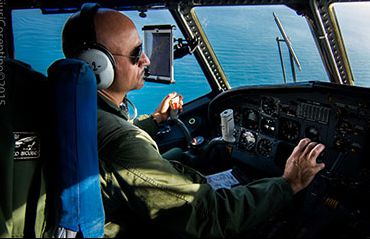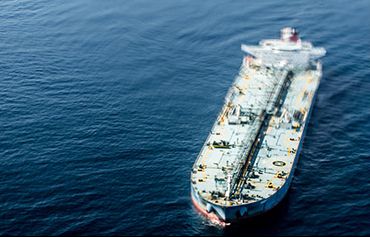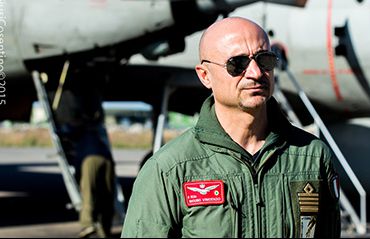Maritime sourveillance and rescue, this is the main activity carried out by the 41 Stormo Antisom of the Italian Air Force based in Sigonella. On a beautiful winter morning we take part in a flight mission lasting 4 hours to monitor the maritime borders of our country.
After the briefing where the details of the activity were explained and the GO! by Colonel Vincenzo Sicuso - commander of the 41st Wing - we head towards the Romeo 5 pitch while the aircraft is already being inspected by the ground service crew before take-off.
On board the Breguet 1150 "Atlantic" aircraft, powered by Rolls Royce, the two turbo "all-weather" patrol propellers quickly make their 6000cv appearance feel like they are inside a World War II bomber.
 A few moments later we find ourselves in flight, with route to the south of the Greek coast, raking so many miles to ensure maritime control in search of someone or something that is signaled by the radar or by the lookouts placed in the portholes. We receive 3 signals from the radar and the staff is activated to find out what it is, fortunately, after a few minutes of browsing we discover that it was merchant and fishing boats. The crew lives in a purely "analog" environment where the human sensor still manages to overcome the "digital" one.
A few moments later we find ourselves in flight, with route to the south of the Greek coast, raking so many miles to ensure maritime control in search of someone or something that is signaled by the radar or by the lookouts placed in the portholes. We receive 3 signals from the radar and the staff is activated to find out what it is, fortunately, after a few minutes of browsing we discover that it was merchant and fishing boats. The crew lives in a purely "analog" environment where the human sensor still manages to overcome the "digital" one.
I tried to simulate the task of a lookout sitting in the bow scanning the horizon, and thanks to the possibility of the Atlantic to fly at very low altitude, at an altitude of 100 feet (equal to 35 m) and below 300 km / h I can locate the fishing buoys, but in other circumstances they could be shipwrecked or boats set up by human traffickers. Environmental crimes and drug trafficking are also fully part of the “tasks” of the 41st Wing.
We had the opportunity to perceive the qualities of the aircraft, during the simulation of release of a SAR chain, an agitated and elaborated phase on the tactical table in a complex of very tight turns where each element of the crew coordinated by the "TACCO" brings to completion the task : situation that puts even strong stomachs in check.

Thanks to the extensive autonomy, Atlantic can conduct systematic searches across the Mediterranean with missions lasting 6 up to 18 hours. The facts of the "Norman Atlantic" ferry were proof of this, bringing the crew to fly for over 11 hours, always ready to unhook the SAR chains (small survival vessels) and going to monitor the transhipment operations of the survivors and beyond .
The standard crew is made up of 13 people who work in perfect synergy and in a complete and autonomous system: three pilots, two TeV (Flight Technicians) who directly control and intervene on the systems and on-board systems identifying the failures and informing the pilots of any failures, furthermore when ordered it provides for the in-flight adjustment of the buoys and also for the manual launch of the flares. When requested by the TeV, they provide optical supervision in their respective areas of competence. Listening to buoys at the magnetic table is entrusted to two OSAs (Acoustic Sensors Operators).
The listening of the echo radar, release of artifices and weapons, tracing routes on a gloss for close actions are entrusted to two OTT (TACTICAL TACTICAL OPERATORS or research); while the four OE (Electronic Operators) operate on radio, radar, MAD and ESM. Finally, the tactical coordinator or TACCO has the task of monitoring the activities of all operators and analyzing the information received and implementing the tactics arranged by the commander sitting at the cloche.
The Atlantic is an aircraft that operates in any weather condition, precisely "all weather", it was designed for this purpose, flying over 250.000 hours after 43 years of honorable service, and will soon be decommissioned to make way for the more advanced ATR-72, in the militarized version “Maritime Patrol” (P-72 A), equipped with the ATOS (AirborneTacticalObservation and Surveillance) system.
 A takeover imposed both by technological progress and by the evolution of scenarios where “The submarine as an instrument of offense is always around the corner and should not be underestimated - explains col. Sicuso - but it is no longer the main problem. The aircraft that will have to replace the Atlantic will not be an ANTISOM but a MARITIME PATROL, that is, that aircraft capable of performing anti-submarine functions, but mainly an ISR aircraft, that is, that every day monitors, recognizes and collects information ".
A takeover imposed both by technological progress and by the evolution of scenarios where “The submarine as an instrument of offense is always around the corner and should not be underestimated - explains col. Sicuso - but it is no longer the main problem. The aircraft that will have to replace the Atlantic will not be an ANTISOM but a MARITIME PATROL, that is, that aircraft capable of performing anti-submarine functions, but mainly an ISR aircraft, that is, that every day monitors, recognizes and collects information ".
Adds the commander "The Atlantic is in" Phaseout "as the spare parts will soon be no longer available. We hope already in 2015 to receive the first examples of the P-72, to carry out the important phase of familiarization and to obtain a tested and operational configuration. In the meantime, the professionalism and quality of our technicians keep and will be able to keep the old Atlantic efficient, operational and safe for as long as necessary ”.
Alessio Tricani
(photo by Giusi Cosentino)
















